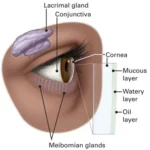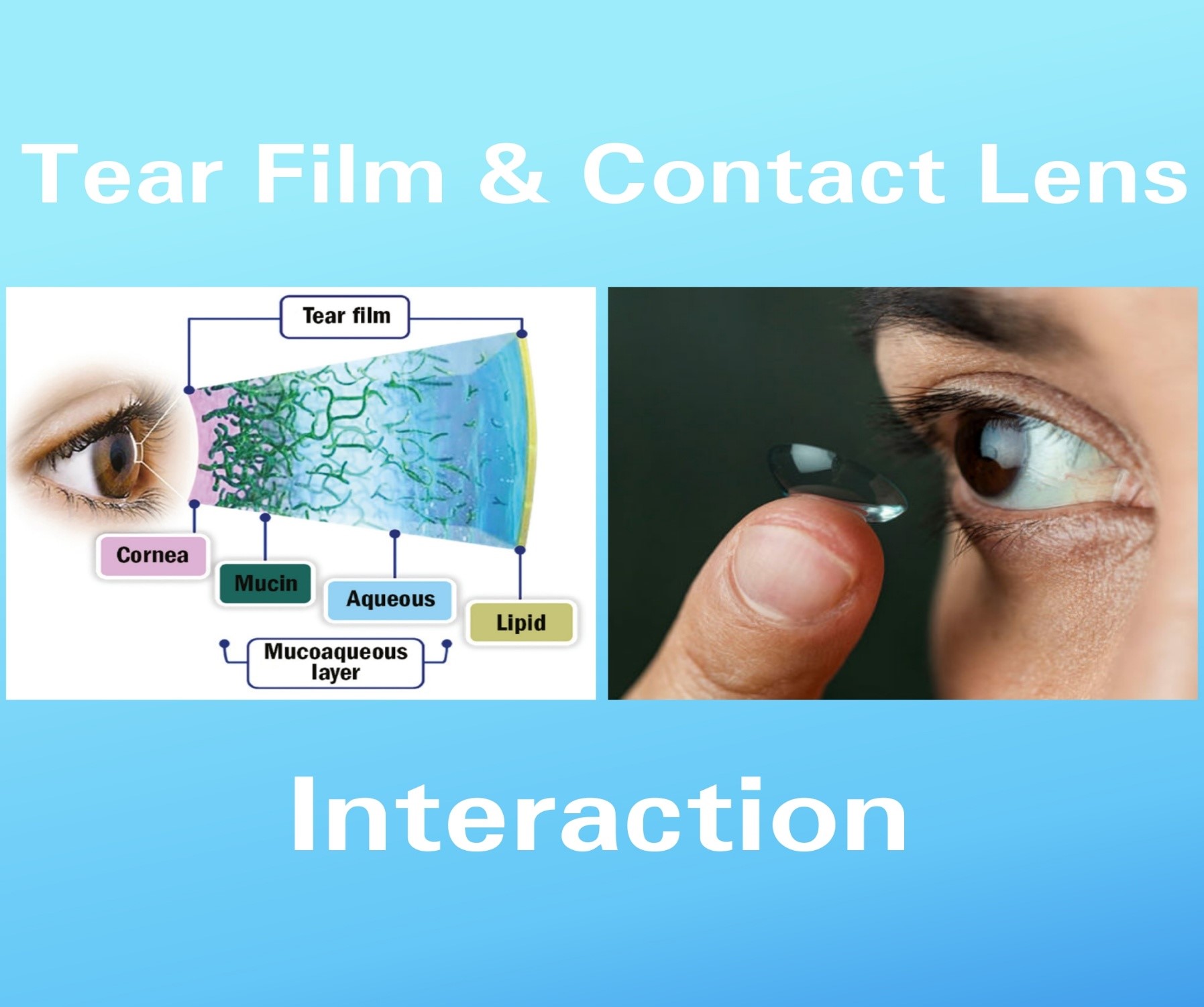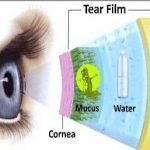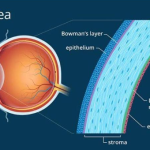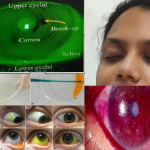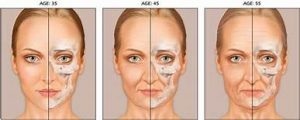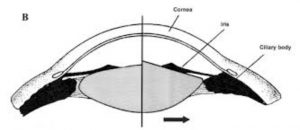DRY EYE SYNDROME – A dry eye syndrome is said to exist when n the quantity or the quality of the precorneal tear film is insufficient to ensure the well – being of ocular epithelial surface.
DRY EYE – Dry eye is a condition in which a person doesn’t have enough quality tears to lubricate and nourish the eye. Tears are necessary for maintaining the health of the front surface of the eye and for providing clear vision.
Dry eye is a common and often chronic problem, particularly in older adults. With each blink of the eyelids, tears spread across the front surface of the eye, known as the cornea. Tears provide lubrication, reduce the risk of eye infection, wash away foreign matter in the eye and keep the surface of the eyes smooth and clear.
Excess tears in the eyes flow into small drainage ducts in the inner corners of the eyelids, which drain into the back of the nose. Dry eyes can occur when tear production and drainage is not in balance.
Dry eyes can develop for many reasons, including:
- Dry eyes are a part of the natural aging process. The majority of people over age 65 experience some symptoms of dry eyes.
- Women are more likely to develop dry eyes due to hormonal changes caused by pregnancy, the use of oral contraceptives and menopause.
- Certain medicines, including antihistamines, decongestants, blood pressure medications, and antidepressants, can reduce tear production.
- Medical conditions. People with rheumatoid arthritis, diabetes, and thyroid problems are more likely to have symptoms of dry eyes. Also, problems with inflammation of the eyelids (blepharitis), inflammation of the surfaces of the eye, or the inward or outward turning of eyelids can cause dry eyes to develop.
- Environmental conditions. Exposure to smoke, wind and dry climates can increase tear evaporation resulting in dry eye symptoms. Failure to blink regularly, such as when staring at a computer screen for long periods of time, can also contribute to drying of the eyes.
- Other factors. Long-term use of contact lenses can be a factor in the development of dry eyes. Refractive eye surgeries, such as LASIK, can decrease tear production and contribute to dry eyes.
Advanced dry eyes may damage the front surface of the eye and impair vision.
OTHERS COMMONLY USED TERMS :-
- TEAR – FILM DYSFUNCTION
- OCULAR SURFACE DISORDER
- KERATOCONJUNCTIVITIS SICCA
- SJOGREN SYNDOME
- XEROSIS
- XEROPHTHALMIA
- KERATOMALACIA
Symptoms ;
People with dry eyes may experience irritated, gritty, scratchy or burning eyes; a feeling of something in their eyes; excess watering; and blurred vision. Symptoms include:
- Stinging, scratching, or burning sensations.
- Light Sensitivity.
- Watery eyes.
- Stringy mucus near the eye.
- Blurry Vision.
- Photophobia
- Foreign body sensation
SIGN:
- PRECORNEAL TEAR-FILM :- Increased amounts of mucus strands and debris in the upper and lower tear – menisci.
- MARGINAL TEAR-STRIP :- It reduced and it contain mucus and debris.
- CONJUNTIVA – Hypermia of the conjunctiva.
- Appearance of folds on the temporal side, especially on abduction.
- CORNEA :-
- SUPERFICIAL PUNCTUATE KERATITIS : involving the inferior cornea , which is stained by fluorescein and Rose –Bengal.
- FILAMENTS :- they are the short tails that hang from the corneal surface.
- Mucus plaques are attached loosely to the corneal surface and are also stained by Rose –Bengal dye.
- DELLEN – but not associated with limbal lesions.
- THINNING – occurs in severe dry eye and sometimes with perforation.
SPECIAL CLINICAL TEST :
- VITAL DYE STAINING
- FLUORESCEIN (2%) STAINING : It stains precorneal tear film and intercellular tissue. It does not stain the mucus and devitalized epithelial cells.
- ROSE – BENGAL (1%) STAINING : It ha an affinity for devitalized epithelial cells , mucus and filaments . It is very useful to detect mild cases of dry eye by staining the interpalpebral conjunctiva in the form of two triangles with their bases towards the limbus .Topical anesthesia should not be prior to Rose – Bengal staining , as it may induce false – positive result.
- ALCIAN BLUE STAINING ; It is used to stain the mucus more selectively .
- TEAR –FILM BREAK –UP TIME :
- A drop of fluorescein is instilled and the patient is asked to blink 2-3 times to distribute the dye.
- The patient is then asked not to blink while the cornea is studied by the cobalt blue filter with the slit lamp.
- TBUT is the time in seconds between the last blink and the appearance of dry (black) spots on the cornea.
- A normal TBUT is more than 10 seconds and a TBUT value less than 10 seconds is abnormal.
- SCHIRMER ‘s TEST : your eyes are healthy, each strip of paper should contain more than 10 millimeters of moisture. Less than 10 millimeters of moisture indicates you probable have dry eye syndrome.Dry eye could just be a symptom of aging, or it could be a symptom of an underlying health condition, such as rheumatoid arthritis. More tests will likely be required to diagnose the specific cause of your dry eyes .If your eyes produce more than 10 to 15 millimeters of moisture, further tests may also be required to determine the cause of your watery eyes.
Treatment
Treatments for dry eyes aim to restore or maintain the normal amount of tears in the eye to minimize dryness and related discomfort and to maintain eye health. Dry eyes can be a chronic condition, but a doctor of optometry can prescribe treatment to keep your eyes healthy and comfortable and to prevent your vision from being affected. The primary approaches used to manage and treat dry eyes include adding tears using over-the-counter artificial tear solutions, conserving tears, increasing tear production, and treating the inflammation of the eyelids or eye surface that contributes to the dry eyes.
- Adding tears. Mild cases of dry eyes can often be managed using over-the-counter artificial tear solutions. These can be used as often as needed to supplement natural tear production. Preservative-free artificial tear solutions are recommended because they contain fewer additives, which can further irritate the eyes. People with dry eyes that don’t respond to artificial tears alone will need to take additional steps to treat their dry eyes.
- Conserving tears. Keeping natural tears in the eyes longer can reduce the symptoms of dry eyes. This can be done by blocking the tear ducts through which the tears normally drain. The tear ducts can be blocked with tiny silicone or gel-like plugs that can be removed if needed. Or a surgical procedure can permanently close the tear ducts. In either case, the goal is to keep the available tears in the eye longer to reduce problems related to dry eyes.
- Increasing tear production. A doctor of optometry can prescribe eye drops that increase tear production. Taking an omega-3 fatty acid nutritional supplement may also help.
- Treating the contributing eyelid or ocular surface inflammation. A doctor of optometry might recommend prescription eye drops or ointments, warm compresses and lid massage, or eyelid cleaners to help decrease inflammation around the surface of the eyes.
Prevention
You can take the following steps to reduce symptoms of dry eyes:
- Remember to blink regularly when reading or staring at a computer screen for long periods of time.
- Increase the humidity in the air at work and at home.
- Wear sunglasses outdoors, particularly those with wraparound frames, to reduce exposure to drying winds and the sun.
- Nutritional supplements containing essential fatty acids may help decrease dry eye symptoms in some people. Ask your doctor if taking dietary supplements could help your dry eye problems.
- Avoiding becoming dehydrated by drinking plenty of water (8 to 10 glasses) each day.
- Avoid air getting blown in your eyes by directing car heaters away from your face.
Avoid environments that are drier than normal, such as deserts, airplanes, and places at high altitudes.


